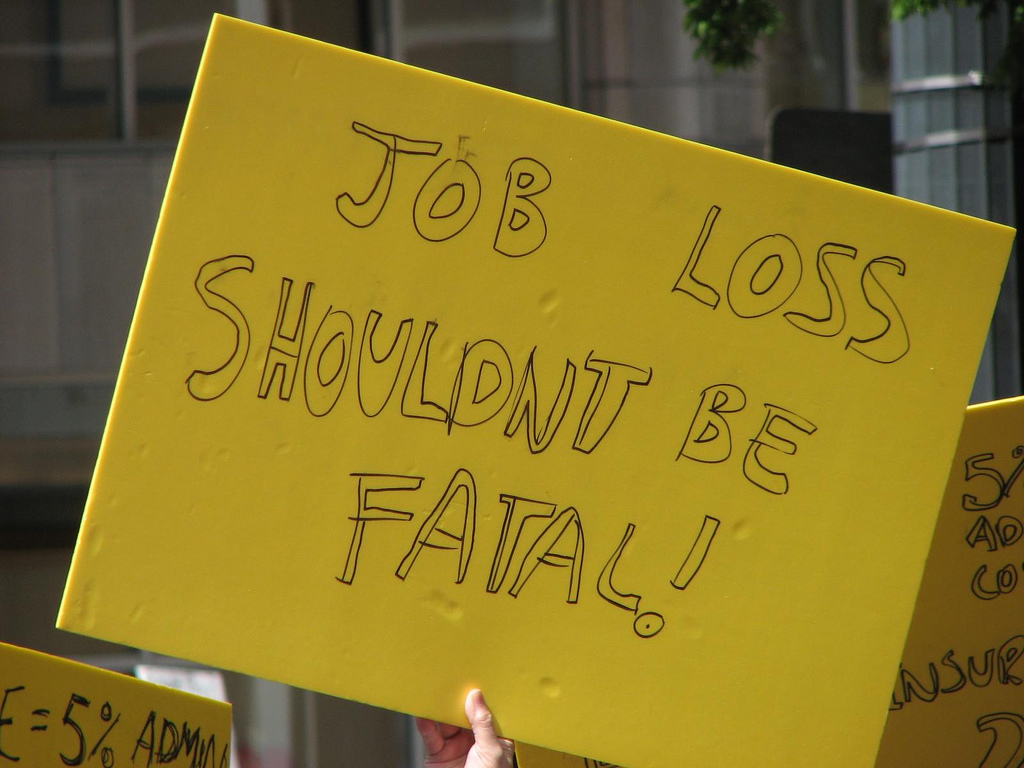Illustration by Alison Booth
As the insurrection at the US Capitol unfolded on January 6, media outlets scrambled to analyze the motivations behind the riot. Commentators tried to make sense of the far-right agitators who attempted to halt the democratic process, and some, like CNN’s Anderson Cooper, made comments about their class.
“They’re going to go back to the Olive Garden and to the Holiday Inn that they’re staying at, or the Garden Marriott, and they’re going to have some drinks and they’re going to talk about the great day they had in Washington,” Cooper said.
The rioters were misguided by Trumpian politics and lies. But to suggest Trump supporters are inherently lower- or middle-class and to mock them for it, as Cooper did, only further alienates these classes from the mainstream media.
Cooper’s comment was outwardly classist; it paints a clear picture of the dichotomy between a rich journalist and his perception of what was funny with regard to the largely middle-class Trump crowd. It draws attention to one of the greatest problems of modern news: the mass media is not representative of the masses because a class gap impedes the industry.
Reporters and editors in media companies overwhelmingly fall into the category of coastal elites, forming a homogeneous bloc of journalists who supply the bulk of the country’s news. This dangerously separates journalist from citizen and elite from working-class, and presents a view filtered by wealthy individuals and corporate conglomerates.
A 2018 study in the Journal of Expertise found that nearly 50 percent of journalists at the New York Times and Wall Street Journal attended elite universities—and about 20 percent of those attended Ivy League schools. Only a handful of schools fed into the NYT and WSJ mastheads. Elite universities are historically accessible only for the White, upper-class majorities, and an opportunity gap for lower-class and minority students plagues higher education.
Thus, the media becomes an assortment of conversations and analyses bound by a harmonization of ideologies, of class interests, of wealth. It becomes a reflection of the rich, a source for the privileged. It matures into a compilation of ideas accessible only by those with similar educational privilege—making it impossible to read or consume for the rest of the country.
Elitism within journalism, particularly in national models, muddles the pursuit of objectivity; it creates a writer–reader dynamic that dissuades relatability. It places in question the integrity of a journalism predicated on elevating voices, particularly marginalized ones.
A Cosmopolitan Ideal
Cosmopolitan newspapers—papers that serve a national or broader audience—are a relatively modern convention. The initial shift to cosmopolitan models occurred in post-Civil War America, when technological advancements allowed information to circulate farther and faster. A greater shift came in the 1960s and 70s, when larger national issues—like Watergate and the Pentagon Papers—needed to be examined on a broader scope that reflected national interests, not just local ones. Papers like the Washington Post and the New York Times seized the opportunity to present the news in a much wider scope.
But in recent years, cosmopolitan papers have become elite-run-and-read. No longer can an aspiring journalist climb the ladder to a top paper with a few good clips and a dream; young journalists must be educated by top universities with impossibly low acceptance rates, expensive tuition fees, and elitist mindsets. In some ways, I have succumbed to the mindset this very essay dissuades; I am pursuing a Northeastern education because I was taught that doing so is the most reliable pathway to industry success.
Walter Lippmann—a twentieth-century media icon who established modern journalism ethics—believed in journalistic objectivity centered around a “disinterested” pursuit of truth, one that isn’t dictated by passion but by secure fact-gathering and honesty.
Indeed, journalism should be practiced by objective methods, but passion in journalism is powerful and shouldn’t be dissuaded. A dispassionate journalist looks from the outside in and simply brushes the surface of facts rather than analyzing the core of the problem. Elitists especially fall victim to this problem, as they try to tackle the true problems of society but cannot quell their inherent elitist biases.
As media analyst Howard Ziff surmises, “The true state of every nation is the state of common life.” Modern media must shift to recognize that the cosmopolitan, elite classes are not the majority.
In Recent History
The journalism industry has been championing and adhering to the dispassionate cosmopolitan model since the 1970s, and has struggled to cover topics such as race, finance, and politics.
In 2011, the Urban League of Greater Madison (ULGM) proposed opening a charter school for African American boys. The proposal reignited conversations on race in the Midwestern city and garnered a lot of media attention. But in the eyes of community activists, news organizations failed to properly cover the story, as their White journalists used “a passive sense of objectivity” when reporting. Reporters shouldn’t show up to neighborhoods when they need a story, community leaders said; they should work to build trust, attend community events, and cover community positives.
Modern journalists should not strive for a severe rendition of objectivity nor a form of opinionated journalism; instead, they should focus “on evidence, coherence with expertise and knowledge, and inclusion of diverse perspectives.” After all, objectivity that privileges elite sources is flawed.
Read: The Progression of Journalism — Transparency When Objectivity Fails
The journalistic mishaps that occured when handling the ULGM’s proposal inherently relate to class and race—the annual incomes of Black households are consistently lower than incomes of other races, and the topic at hand was the founding of a charter school. But other examples also point out the dangers of an elitist cosmopolitan model; CNBC has published “money diaries” that champion elitist ideals while patronizing the poor for an inability to budget (when of course, poorer people experience less financial elasticity). The “liberal bubble” of the mass media prevented it from diving deeper into the political views of the noncoastal states prior to the 2016 election, including those of the White working class. This prompted a severe miscalculation of electoral trends and perhaps even led the country to a Trump victory.
Journalism that encourages a focus on the elite, for the elite, by the elite, is a failed model.
In The View from Somewhere: Undoing the Myth of Journalistic Objectivity, transgender journalist Lewis Raven Wallace describes his time at WBEZ as a Pritzker Journalism Fellow, a program created to diversify the station. The program invited two community-focused fellows to learn about and practice journalism, simultaneously better connecting the station to its listeners. While the project was great in theory—as it aimed to resurrect the community–news relationship public radio stations once championed—it fell short in practice. Wallace was instructed to steer clear of stories that were connected to his previous activist work on transgender issues and White privilege. Already, WBEZ was attempting to sever Wallace’s identity from his work.
After finishing his fellowship, Wallace worked in public radio for Marketplace, covering marginalized communities and their economic issues. As a part of his personal interest in this work, Wallace published a Medium opinion piece about the downfalls of objectivity in modern journalism. To Marketplace, Wallace’s article contradicted their organizational values of objectivity and neutrality, even though these “values” aren’t mentioned in their ethics code. Nevertheless, Marketplace fired Wallace and its vice president deemed his coverage “advocacy journalism.”
These examples are not explicitly about class, but they inherently tie into the classism of modern cosmopolitan journalism, which fails to achieve the diversity goals it supposedly champions.
Class as a Function of Diversity
In recent years, media conglomerates have tried to improve their diversity numbers. The New York Times has released yearly diversity and inclusion reports that quantify its attempts to create a more diverse newsroom. In 2018, the Washington Post revealed initiatives to “build a stronger culture of diversity and equity” in the company. In neither of these—which reflect other papers’ and stations’ diversity attempts—is class mentioned. They instead focus on race and gender which, while incredibly important, also indicate the class gap in journalism.
Race, gender, and class are the three pillars of intersectionality—the pillars of what makes diversity truly diverse. But fewer studies focus on class than on gender and race.
Modern education is almost entirely driven by class. Affluent high schools have turned largely into college prep schools, bound by SAT tutors and supportive parents galore. Take the 2019 college admissions scandal, in which upper-class parents paid their kids’ way into elite schools. The debacle revealed unwritten rules and games of college admissions played only by the one percent and elite universities.
It may be argued that all three pillars of intersectionality are equally intersectable, that class does not dominate gender and race but integrates with them to form an identity. And I would agree—the three are nearly equal. But because we are made so aware of our gender and racial identities through modern education and access to higher education is determined by class, that class variance is indeed the most important function of diversity.
Yet it seems ironic that class is the least valued sector of identity when it comes to diversity goals. While modern newsrooms are paying more attention to their race and gender diversity goals—hiring more people of color, women, and nonbinary journalists—the class gap has only widened. Since the rise of cosmopolitan journalism, the industry has only gotten more elite.
It seems newsrooms are favoring Lippmann’s dispassionate, yet knowledgeable and intelligent journalist who is elitely educated and prestigious. And of course intelligence and knowledge of public affairs are valuable. But these characteristics are becoming less accessible to all classes when modern education so blatantly favors those of the upper class.
To start to close the class gap in the news, media companies must first acknowledge its existence within their walls.
Creating a Balance
True objectivity cannot exist unless journalists and their audiences lay on an equal playing field where journalist may be reader and reader may be journalist. The historical norm and recent escalation of elitism within journalism is dangerous to democracy and further divides the public.
Lylah Alphonse, prominent journalist and editor of the Boston Globe Rhode Island section, explained that “there’s still this assumption that all readers are homogeneous . . . that our readers are all affluent and White.” But they’re not, and modern newsrooms need to reflect that in order to better serve and understand the public. Media, according to Alphonse, must “get to know the people who are not just part of your coverage, but who are consuming your coverage” to create newsrooms that are truly diverse.
If cosmopolitan papers are stringent about objectivity and local papers are focused on community, as Ziff suggests, is it so idealistic to introduce a paper that combines these ideals and connects to communities in a factual, empathetic way? Is it so radical to suggest a media community that reflects the class diversity of the public it serves?
Modern media can be a precarious place. Distrust is up and “fake news” is still on the rise. In order to reconnect the media with the public, cosmopolitan papers need to start looking at diversity as a function of class. They need to employ more working-class journalists, journalists without college degrees from elite universities, and people from rural ZIP codes.
The press is supposed to be the fourth estate of democracy—the “final check” in our system of checks and balances. The media should constantly question and analyze the motives and influences of our government from all angles, not just from an elite perspective.
Modern papers have a great opportunity to truly connect with communities, and they must seize it. They should move toward a model of journalism that peels back layers of objectivity and focuses on building community while sharing a variety of news—not just news for the upper class.



